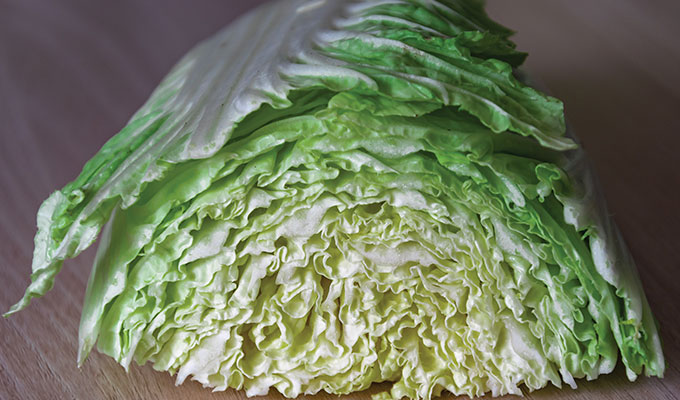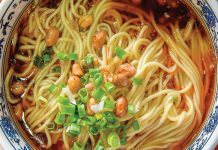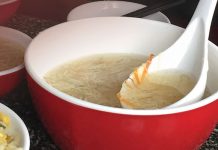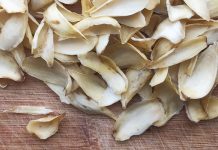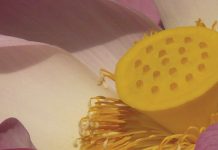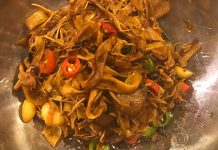Chinese cabbage, or Da Bai Cai (大白菜), may be to most people, boring and insignificant. That it is even on the table for this month’s column may ignite some serious yawning from readers. Before giving up on this humble stem, however, read on, for this leafy green is so powerful and symbolic that you absolutely need, to not only know about it, but start including it into your daily diet because, yes, it’s that powerful!
Health Benefits
Suffering from high blood pressure? Chinese cabbage contains high amounts of calcium and potassium, which is used to regulate blood pressure. Rich in iron, it can support those who suffer fatigue-related problems, while its long list of antioxidants, including vitamins A and C, protect the body against free radicals.
Chinese cabbage is low in calories, yet has the ability to make one feel full. Hence, it helps with weight loss. It contains antibacterial and anti-inflammatory properties, such as glucosinolates, a serious factor in aiding those who suffer from digestion problems and Helicobacter Pylori. In addition, with 27mg of vitamin C per 100mg, 77mg calcium and 13mg of magnesium, it packs a pretty powerful punch of daily support for the body.
Symbolism
Ever wondered to yourself, when browsing Chinese glass or porcelain objects, why one recurring shape looks exactly like a cabbage? Why would the ancients possibly want to immortalise a vegetable? As it turns out, Chinese cabbage is a sign of prosperity and much more.
At the National Palace Museum in Taipei, sits on display, the Jadeite Cabbage with Insects piece. It depicts the Chinese cabbage figure with a locust sat inside the leaves. First displayed at the Forbidden City’s Yonghe Palace, according to Leslie Hook from the Wall Street Journal, the piece was probably gifted to the Qing Empire’s Guangxu Emperor’s Consort, Jin, as part of her dowry, in 1889.
A veteran of both the Sino-Japanese war and the Chinese civil war, the piece has survived and now sits on display. It is believed to symbolise female virtue and purity, fertility and abundance, and is considered one of the Three Treasures of the National Palace Museum.
Legend
The story goes that Empress Dowager Cixi of the Qing Dynasty fell gravely ill and was unable to eat, drink, urinate or move her bowels. She lacked energy, ran a high temperature and suffered respiratory problems.
Vicky Chan, of therapeutic cooking blog, Nourish U, relays that, at the advice of a monk, the Empress went on a diet of cabbage juice and soup, which is said to have saved her life. Nursed back to health by the cabbage, she is said to have praised it as “The King of All Vegetables”.
As a result of Chinese emigration, this cabbage is now found all over the world, where it is grown best in cooler temperatures as it is a nightshade root vegetable that remains inexpensive and abundant.
How To
In order to maintain the high amount of vitamins and minerals in the cabbage, it is recommended to cook it Chinese style; under heat for the shortest time possible. Aside from Chinese ways of cooking the vegetable, most Western dishes that include cabbage can be substituted. We have, over this past summer, enjoyed using the cabbage raw, as the basis of a refreshing asian coleslaw.
Below are some of the most common dishes featuring Chinese Cabbage in China:
- Pickled Cabbage; Da Bai Suan Cai (大白酸菜)
- Fried Cabbage; Chao Da Bai Cai (炒大白菜)
- Cabbage Soup; Da Bai Cai Tang (大白菜汤)
- Spicy Fried Cabbage; La Chao Bai Cai (辣炒白菜)
- Spicy Sour Cabbage; Suan La Bai Cai (酸辣白菜)
- Fried Cabbage with Vermicelli; Bai Cai Chao Fensi (白菜炒粉丝)
- Fried Cabbage with Pork; Bai Cai Chao Rou (白菜炒肉)
- Fried Cabbage with Black Fungus; Bai Cai Chao Mu’er (白菜炒木耳)
- Rolled Meat in Cabbage; Rou Bai Cai Juan (肉白菜卷)
- Cabbage and Tofu; Bai Cai Doufu (白菜豆腐)


